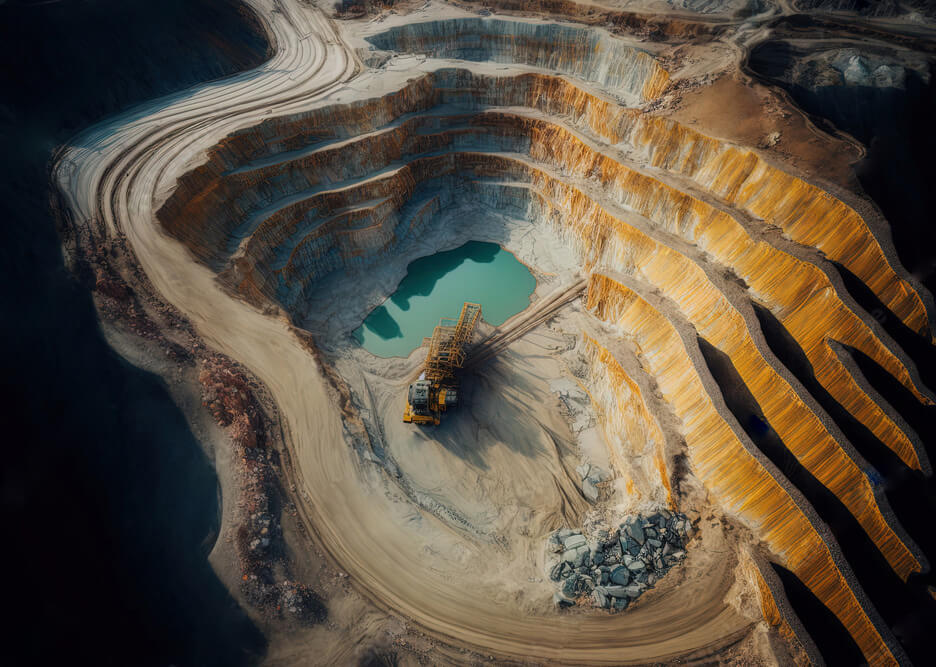Minerals play a crucial role in various industries, from construction and manufacturing to technology and energy production. But have you ever wondered how these valuable resources are extracted from the earth? In this comprehensive guide, we will delve into the intricate process of mineral extraction, exploring the methods, technologies, and environmental considerations involved.
- Exploration and Site Selection:
Before any extraction can take place, extensive exploration is conducted to identify potential mineral-rich areas. Geologists employ a range of techniques, including satellite imagery, geological mapping, and geochemical surveys, to pinpoint promising locations. Once a site is selected, detailed assessments are made to determine the feasibility and economic viability of extraction. - Mining Methods:
There are several mining methods employed, depending on the type of mineral deposit and its depth. Let's explore some of the most common techniques: a. Open-pit Mining:
This method is used for shallow mineral deposits near the surface. Large-scale excavation machinery, such as draglines and shovels, is employed to remove overburden and extract the minerals. Open-pit mining is highly efficient but can have significant environmental impacts. b. Underground Mining:
When mineral deposits are deeper, underground mining becomes necessary. This method involves constructing tunnels and shafts to access the ore bodies. Various techniques, such as room and pillar mining or longwall mining, are used to extract the minerals while ensuring the stability of the underground structures. c. Placer Mining:
Placer mining is employed for minerals that have been eroded and deposited in riverbeds or sedimentary deposits. Water jets or dredging equipment are used to extract the minerals from the loose sediments. - Extraction Processes:
Once the minerals are accessed, they undergo extraction processes to separate them from the surrounding rock and impurities. Here are a few commonly used extraction methods: a. Crushing and Grinding:
The mined ore is crushed into smaller pieces and then ground to a fine powder. This increases the surface area, facilitating the subsequent separation processes. b. Froth Flotation:
Froth flotation is a widely used technique to separate minerals from their ores. The finely ground ore is mixed with water and chemicals, creating a froth that selectively attaches to the desired minerals, allowing their separation from the rest of the ore. c. Smelting and Refining:
For some minerals, such as metals, smelting is employed to extract them from the ore. Smelting involves heating the ore at high temperatures to separate the desired metal. Refining processes further purify the extracted minerals, removing impurities and enhancing their quality. - Environmental Considerations:
Mineral extraction can have significant environmental impacts, and sustainable practices are crucial. Mining companies employ various strategies to minimize their ecological footprint, including: a. Reclamation and Rehabilitation:
After mining operations cease, the land is rehabilitated to restore its natural state. This involves recontouring the land, replanting vegetation, and addressing any soil erosion or water contamination issues. b. Water Management:
Mining operations require substantial water usage. Implementing efficient water management practices, such as recycling and minimizing water consumption, helps reduce the strain on local water resources. c. Waste Management:
Proper disposal and management of mining waste, such as tailings and overburden, are essential to prevent environmental contamination. Techniques like tailings dams and waste rock stabilization are employed to mitigate potential risks.
Conclusion:
The extraction of minerals from the earth is a complex and multifaceted process, involving careful planning, advanced technologies, and environmental considerations. By understanding the intricacies of mineral extraction, we can ensure sustainable practices that balance the demand for valuable resources with the preservation of our planet's ecosystems. So, the next time you hold a piece of jewelry or use a technological gadget, remember the journey it took from deep within the earth to your hands.



